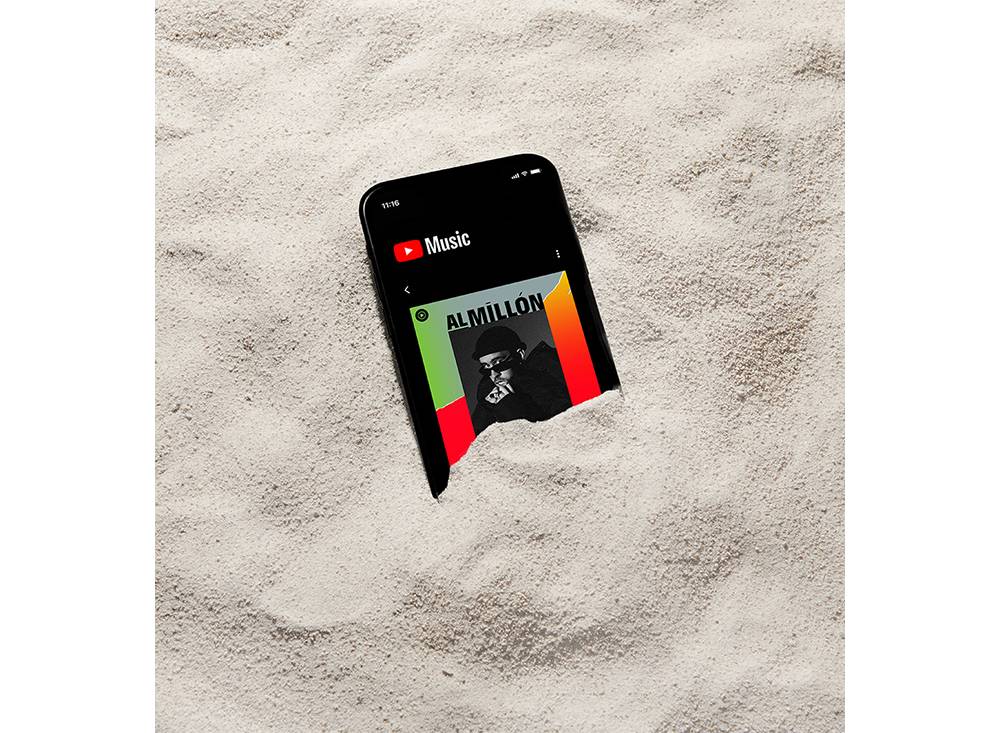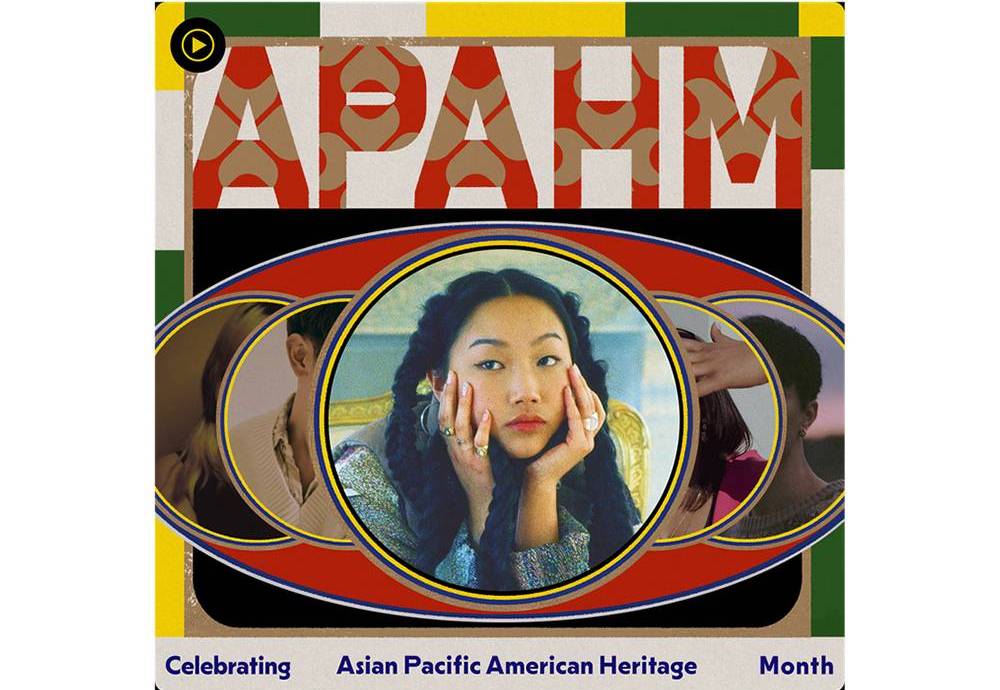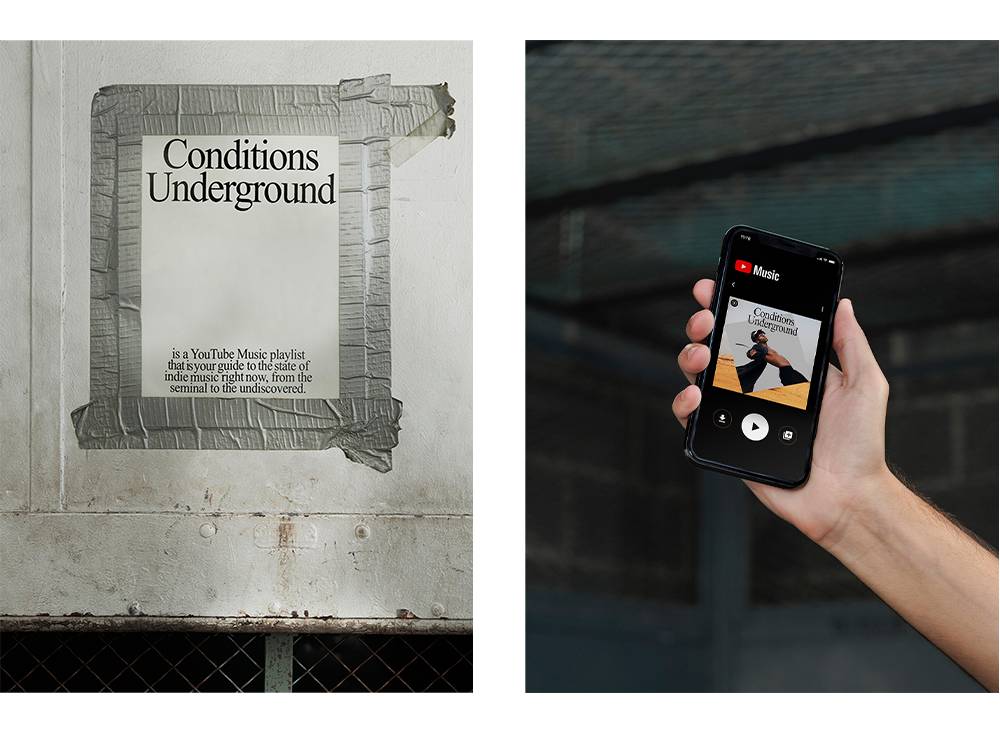Spinning in a visual and musical swirl with Gabriela Namie
Gabriela Namie’s design and art direction work scale globally, radiating distinctive authenticity along with striking geometry and a hypnotic color palette. The New York-based designer currently works at Google as YouTube Music’s art director, where she crafts the groundbreaking visuals and leads the branding. Aside from 10 years of experience of helping brands come to life, Gabriela co-founded the Barca Studio and was a Senior Designer at Sagmeister & Walsh. We had a chat with the art director and Forward Online Festival speaker to get a better insight of her background, creative thinking and inspirations.
You have been working with established brands presenting compels different complexities. What were the main challenges of managing your freelance work with such a varied portfolio of clients?
For a long time, I really wanted to go independent. When I eventually left my full-time job to go freelance, I started taking on a lot of work which rapidly evolved into co-founding my own studio. As the head of my studio, I was excited to take on as many projects as I could, both to build a wide range of clients for the business as well as I understand my strengths and capabilities as an independent designer. That said, I found myself taking on every project that sounded exciting and in turn sacrificing a healthy work-life balance. Over the years, I learned to pick and choose projects that resonated with me as a person, my skill sets, and my passions. This helped me build confidence in myself, work on projects that best fit my practice, and also say no in a comfortable way.

Сurrently you work at Google as YouTube Music’s art director. What’s the best part of creating with such a giant? Tell us about your team.
Coming from studio environments where my personal circle was made up of predominantly graphic designers, I was excited to work with people who have different skill sets than me. I believe that working in teams with a diverse range of skills sets and experiences benefit everyone and the work itself. I’ve been fortunate to work with talented music curators, PMs, engineers, marketers, and UX designers from whom I’ve learned a lot. Working in-house also allows me to understand the product on a level I never did before. For example, I can adjust my work over time based on learning from data and human insights. If something did not work, I can simply acknowledge it and change it. This new process is a huge source of learning and satisfaction! Sometimes it is not the “coolest”, or subjectively “most beautiful” work that ends up being best for a global audience. I want to make work that scales globally. And Google/YouTube definitely provides me this opportunity.

Tell us about a project you really had fun in the making and that still brings your excitement back whenever it comes to mind.
I have so much love for the work I did for Zooba at & Walsh. A lot of unique factors made this project special to me. I had a lot of trust and creative freedom from Jessica Walsh, founder and creative director, and she was super kind to let me drop other projects because I was so excited about this one. The clients trusted the studio and needless to say, they have an amazing, yummy product. After 3 years at the studio, this was the last branding project I led before I left for Google. Looking at the restaurant and remembering the mock-ups feels so crazy to me. Recently, someone went to Cairo and showed me the jackets the delivery workers wear with the Zooba branding. I went crazy for it and the founder was kind enough to give me one. It is 3 times my size, but it is my favorite jacket now!
The leitmotif of the Asian-Brazilian narrative is sometimes evident in your work. Could you tell us a bit more about your background history and why you decided to move to New York from São Paulo?
I am a 4th generation Japanese Brazilian from São Paulo. I never thought of my identity as a duality, but both cultures were always at play. I went to a Catholic school, but my family traditions were Buddhist. We ate feijoada on Wednesdays, but with Japanese rice. It is interesting and kind of funny to think about it now, but it was just how it was. I never felt less Brazilian, nor less Japanese until I actually met Japanese people or until I actually moved out of Brazil. My identity was never complex to me, but it did teach me early on that homogeneity is boring. And I guess this idea is present in my work and in everything I do.
That is why I never thought of leaving São Paulo, which is a wild, diverse and exciting city. I didn’t know it then, but so is New York. When the opportunity to work at Sagmeister & Walsh appeared, I was excited about the studio, but not necessarily the city. I have been here for 5 years and now I can say I love living here.

You have acquired significant recognition in the field, how can you cope with the constant challenge of innovating and the necessity to preserve your creative identity at the same time without diluting your beliefs?
I used to think a lot about it. But worrying about making better, newer and shinier work did not make my work better. Attending the briefing and proposing solutions did.
I am non-conformist, vocal, and see no point in working on projects in which solutions don’t meet their goals. Innovation comes naturally when needed. I proposed new systems and ideas when they made sense. Innovating as a visual exercise is fun, but in commercial projects, it adds more value when it is an answer to a problem.
How do your personality traits reflect on your work?
I get easily excited and curious about different things beyond design. I believe they all become references to my graphic work. I am vocal and tend to question what is the best way to do something, which historically has led me to propose new systems when it makes sense. I get easily bored, so I have taken work that felt challenging in some way or another.

Could you recommend any digital sources for getting inspired?
I constantly check Bonde, which highlights Brazilian designers. I have been really excited about newsletters: Common Discourse by Alex Tax, Casual Archivist by Elizabeth Godspeed, and Design Harder by Erik Carter. I research LP covers and I post them on One Cover a Day. In this sense, YouTube has been my main source of inspiration as it has music I can’t find anywhere else.
In the past year you spent some free time providing portfolio reviews and career advice for creatives, are you still mentoring? What do you find the most empowering about this experience?
I am constantly in awe of the people I meet during mentoring and portfolio reviews. It is one of my favorite parts of the week. North-American schools tend to teach more about portfolio building and the commercial side of our practice, but not all schools do it. I am happy to provide my advice and opinion and help people make their work shine in the best way possible.

Regarding your personal projects, do you sometimes have doubts or are you normally quite persistent?
I do indeed have doubts and I have not made personal design projects a priority. I like to have a good balance between design practice and all the other things I am interested in. Besides mentoring and portfolio reviews, I am currently training for a marathon and a triathlon competition. I also need time to decompress and do nothing. I have a lot of ideas that never materialized into an actual project. I’d love to accommodate them at some point. But I don’t think I can make them a priority while giving my best at my job and my non-design interests.
Who are the artists or designers you admire the most and deeply impacted on your aesthetic?
I love Karel Martens’ sense of experimentation, Tarsila do Amaral’s sense of identity, Bea Feitler’s freshness. Some random things that always get my eye and heart are William Eggleston’s photographs, Tropicalia albums covers, Brazilian Modernism and Vienna Secession architecture. These are so random, but they are constantly on my mind as references.
What are the next steps of your career?
Keep doing what I am doing, but get a little better every day.

Gabriela Namie is one of our speakers at Forward Online Festival on March 10th – 12th, where she will be talking about her deep connection to music and design world.